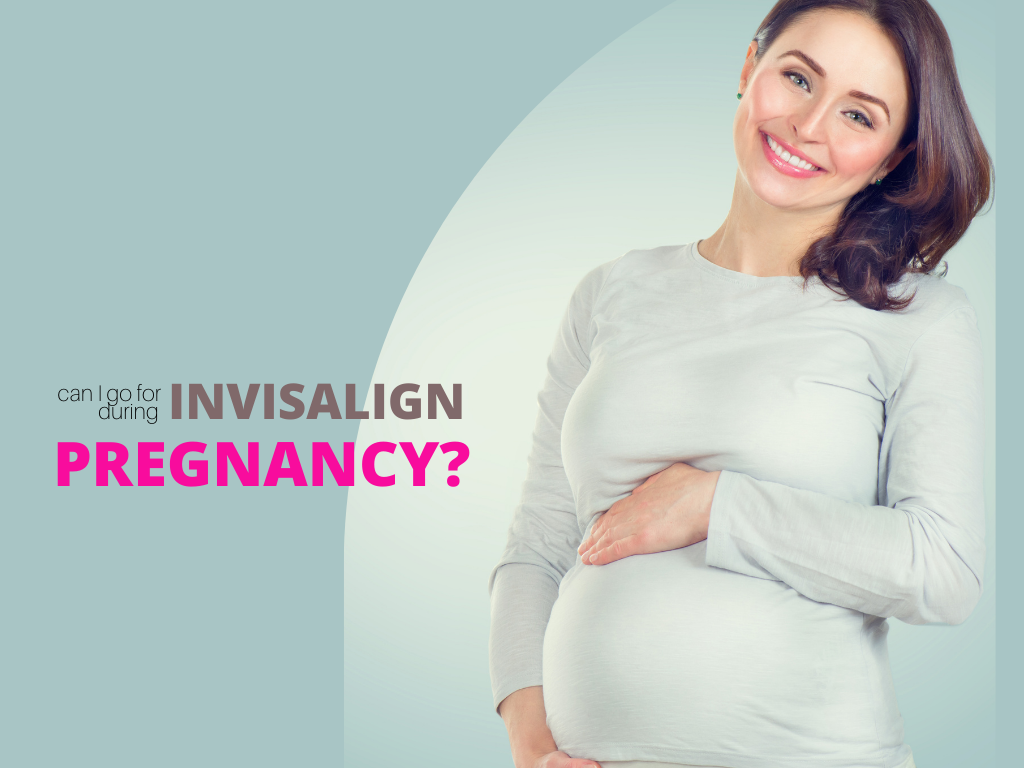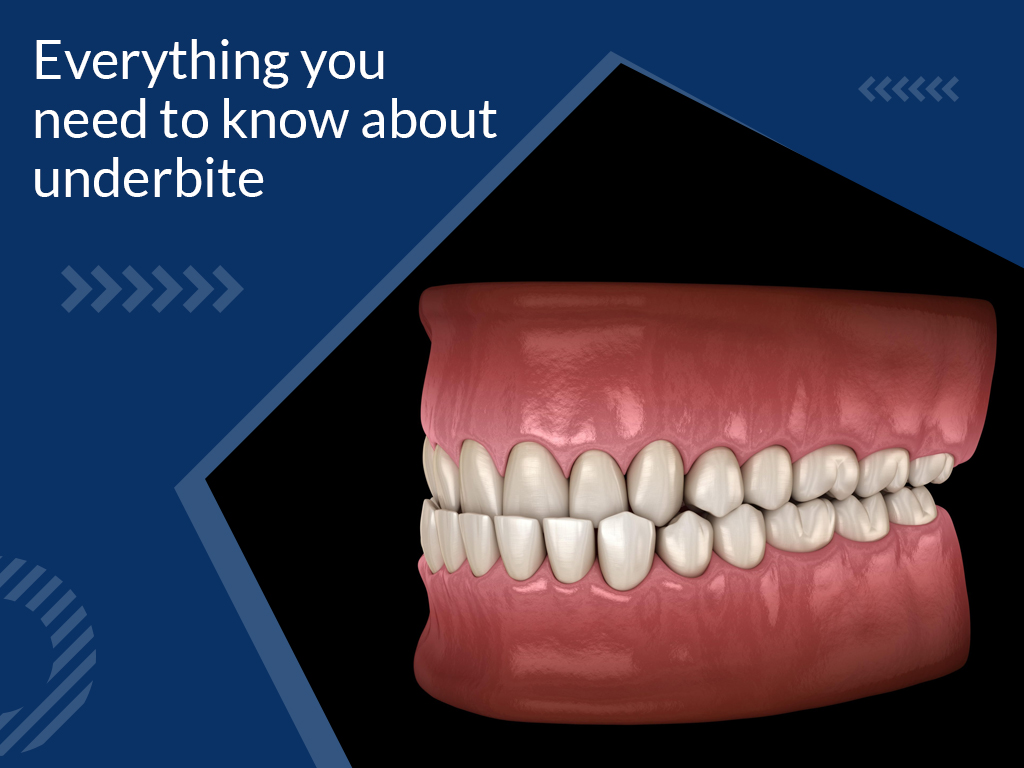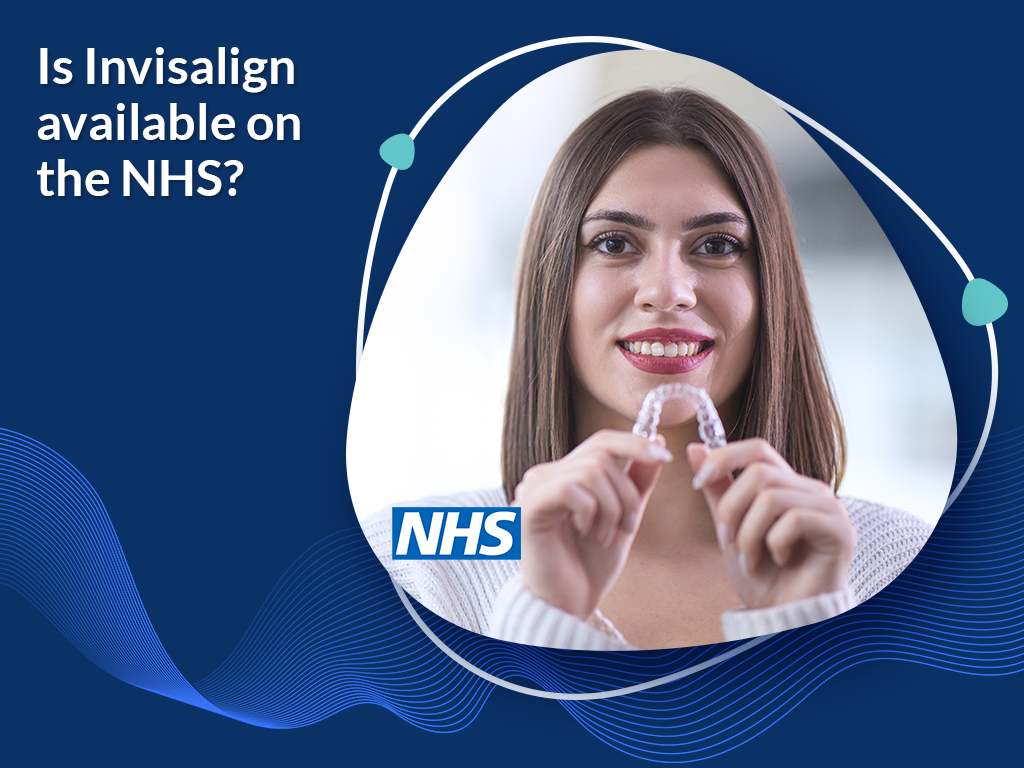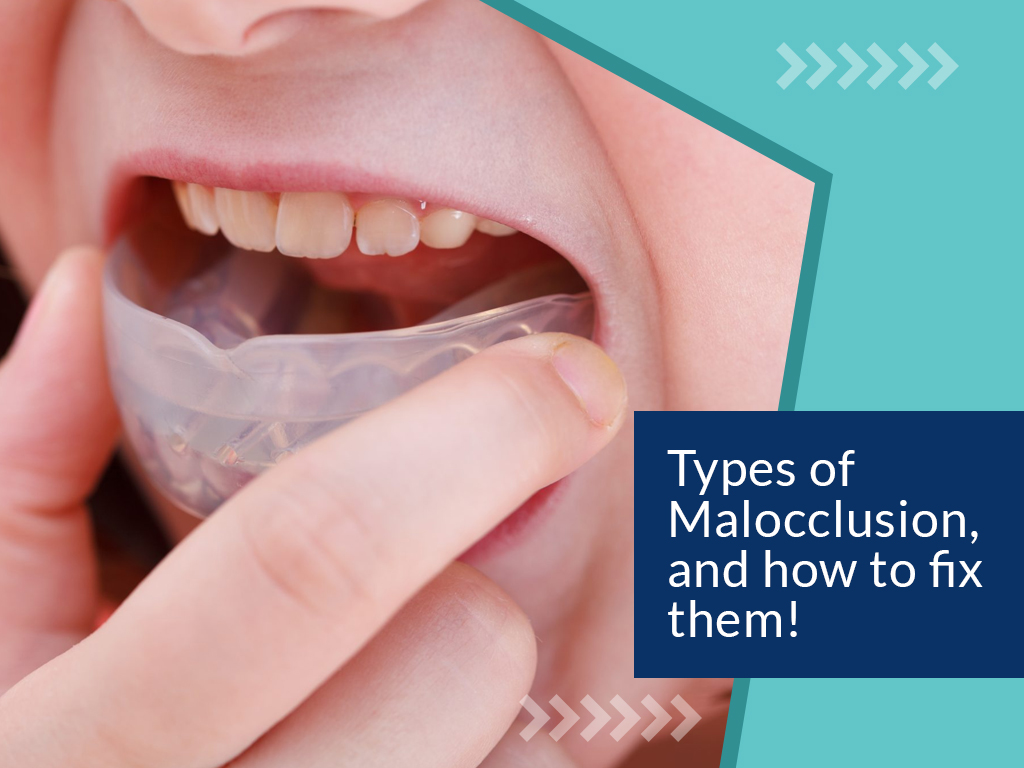
Types of Malocclusion, and How to fix Them!
‘Malocclusion’ simply means a misaligned bite. One or multiple crooked teeth can mean the lower and upper teeth do not come together in a normal position, affecting appearance, your ability to eat, talk, and smile confidently.
Having a misaligned bite may result in:
- Being self-conscious or embarrassed about the way your teeth look
- Difficulty in eating and chewing
- Difficulty maintaing good oral health (it may be mich harder to properly brush or floss crooked or crowded teeth)
- More pressure on certain muscles and teeth, causing breakages, straining and soreness
Luckily, there are several treatments which can help in the realignment of your teeth to a healthier and better position. In this guide, we will explain the various types of malocclusion, what causes them, and how you can fix crooked teeth by making use of veneers, braces, and other treatments.
Table of contents
- What causes crooked teeth?
- The different kinds of dental malocclusion
- I have crooked teeth- how can they be fixed?
- Summary of malocclusion treatments
- Conclusion
What is the cause of crooked teeth?
Malocclusion of the teeth can occur due to a variety of causes. Sometimes, itis simply genetic, but some particular habits or behaviours can also cause teeth to become crooked. Here are some common causes:
- Cleft lip or cleft palate
- Issues with the development of the jaw
- Impacted teeth (including wisdom teeth)
- Hypodontia or Hyperdontia (having missing teeth or excess teeth)
- Gingivitis (gum disease)
- Longer use of feeding bottles as a child
- Sucking a dummy or thumb beyond the age of 3
- Tongue thrusting
- The loss of baby teeth in early years
Should I be worried about a crooked baby tooth?
Baby teeth which become crooked should not initially be a cause of concern. There are several factors which can cause this, and they do not mean the permanent adult teeth will be the same.
A baby’s teeth may grow in a crooked form because they inherited large teeth from one parent, and a small jaw from the other. This can result in overcrowding, and it is likely they will require orthodontic work at some point. However, if there are gaps between the baby’s teeth, this is usually a good indicator that they will not suffer from issues like overcrowding once they have permanent teeth.
When teeth are crooked, they are more difficult to clean compared to straight teeth, so you will need to pay close attention to your child’s oral hygiene. This includes brushing for the required time, twice daily, using a fluoride toothpaste.
You need to begin visiting a dentist with your child the moment their first tooth comes out. This allows the dentist to properly monitor their teeth development and growth, meaning any issues such as malocclusion can be spotted quickly. It also makes your child get comfortable with going to the dentist regularly!
What to do if your child’s permanent teeth emerge in a crooked form
Do not worry if your child’s permanent teeth emerge in a crooked form; they may straighten themselves as they sense space for growth. Nevertheless, it is a good thing for you to take your child for dental check-ups on a regular basis. If the dentist believes that your child needs braces, they will refer you to a specialist orthodontist for more assessment.
Adults can pick from invisible or clear braces:
Several adults live their daily lives with crooked teeth and think nothing of it. Unless it affects your speech, eating, or is causing you to feel self-conscious about your appearance, there is usually no need to undergo orthodontic treatment. It is a very personal decision and depends on your own feelings and approach. In this age of social media and the importance of a polished image, it is increasingly common for adults to have orthodontic treatment for cosmetic reasons.
Types of dental malocclusion
Malocclusion classes
Orthodontists make use of the classifications below to talk about malocclusion:
Normal occlusion: The lower and upper first molars join together normally.
Class 1 malocclusion: The lower and upper first molars join together normally, but the other teeth have some sort of crowding and other irregularities which include rotation.
Class 2 malocclusion: The position of the upper first molar is too far forward from the lower first molar. This results in an overbite.
Class 3 malocclusion: The position of the upper first molar is too far back from the lower first molar. This results in an underbite.
Do not worry if these are a little bit hard to understand. Below are other ways to categorise crooked teeth and malocclusion in layman’s terms:
Crossbite
Where the upper teeth sit on the lower teeth. This may just affect one tooth or a whole row of teeth in any part of the mouth. If there is a misalignment in the jaw, surgery may be required.
Underbite
Where the lower front teeth extend out more than the upper front teeth. About 5-10% of people have an underbite, and it is normally recommended that you correct it.
Overbite/overjet/deep bite
Where the upper front teeth overlap the bottom front teeth too much horizontally (deep bite) or also when they come out too far vertically (overjet). This is a relatively normal issue which can occur and is usually correctable with braces.
Open bite
With an open bite, there is a gap between the lower and upper front teeth, but the back teeth still touch while biting. This is normally caused by habits such as tongue thrusting and thumb sucking.
Gaps between teeth
Even if teeth seem to emerge well- aligned, there may be some gaps between the teeth which are noticeable. “Diastema” is the technical term used to denote the gap between two teeth. It mostly happens between the two top teeth at the front.
When there are larger gaps between the teeth, food may get stuck. Without proper oral hygiene, this can lead to tooth decay and gum disease. People also have treatments for noticeable diastema for cosmetic reasons.
Overcrowding
This is a major cause of crooked teeth. If there is not enough space in the jaw for the teeth to grow in their proper place, they may end up overlapping and rotating. It can happen in either jaw, so there may be crooked top or bottom teeth.
Sometimes, it may be necessary to remove one or more teeth in order to provide enough space for teeth to develop and align themselves properly.
How can crooked teeth be fixed?
The most common treatment used to correct crooked teeth is braces. They come in different styles, but in general, they work by slowly moving the teeth into a perfect alignment.
When using braces to treat crooked teeth, it usually takes between twelve to eighteen months to achieve the final result. In more complex cases, however, treatment may take a little longer. Some teeth may need to be filed down to make more spaces at the edges, or between teeth. This enhances the position of each tooth and gives optimal overall alignment.
If you only have a slightly crooked tooth, or only your front teeth need to be straightened, treatment may be considerably simpler, cheaper and faster. Some brands of braces are specifically designed to treat only front crooked teeth.
Nevertheless, if your malocclusion is more complex because you have a misaligned jaw, it is possible you may require surgery in order to enhance the effectiveness of treatment with braces. This will ultimately ensure the longevity of any orthodontic treatment because the underlying issue will be fixed.
Can I fix crooked teeth without using braces?
If you would prefer to avoid using braces, you may be able to use removable aligners. This includes the famous brand Invisalign. In this treatment, teeth that are crooked can be repositioned into proper alignment very discreetly. Clear plastic aligners are used as an alternative to conventional braces. These retainers can also be removed for eating and drinking each day.
It is easy and straightforward to check if you are a good candidate for treatment with Invisalign clear aligners. On Invisalign’s website, you can take a free assessment and submit your information, and you will receive a response in just a few minutes.
If you would prefer to talk about your treatment in person, you can check for an Invisalign provider near me, and you can even book an appointment online. At Chatfield, we have two reputable dentists with a special interest in cosmetic dentistry and Invisalign.
One other way you can straighten your crooked teeth without making use of braces is by using a retainer. These do not use the same strong force as ordinary braces, so are only suitable for milder cases. You will also need to wear retainers to prevent teeth reverting to a crooked position after treatment.
Veneers for adults who have crooked teeth
Veneers are a type of cosmetic treatment that can be used in less severe cases of misalignment improve your teeth’s appearance. Instead of changing the teeth’s position, a dentist can fix veneers onto teeth that are crooked, to give them a straighter look. However, this is often simply aesthetic and will not correct issues with occlusion. It is important to discuss the different options with your dentist.
Porcelain veneers
These coverings can be placed directly by making use of composite, (the same material used for bonding to enhance appearance), or created to measure from porcelain. They are then fixed over teeth much like a fake fingernail. The cost of composite veneers for crooked teeth is usually between £100- £400 per tooth, whilst the cost of porcelain veneers is between £400- £1,000 per tooth.
Veneers are only suitable for front teeth. The original teeth will need to be filed down, and you can not just remove the veneers if they do fail; you will need to have replacements fitted.
Can crooked teeth be fixed at home?
You may have heard of people talking about ways they can fix crooked teeth without the help of a dentist; for example, using elastic bands. On the face of it, this may seem like a bargain way to get your dream smile without having to use potentially expensive treatments. However, this is in fact, a very bad idea. By completing DIY treatments, you are at risk of causing permanent damage. Also, without making use of a bespoke retainer, and following specific instructions from your dentist, the results you get would not last for any considerable length of time. This really is a false economy. Orthodontists undergo substantial extensive training in order to treat occlusal issues. In much the same way you wouldn’t try and perform DIY heart surgery, do not try to do DIY orthodontics!
There’s also the alternative of using home teeth straightening kits that are similar to braces, and can be ordered online. These are rarely effective and come with associated risks, especially as they come without bespoke instructions and advice from a professional dentist.
Summary of malocclusion treatments
There are a number of ways to fix crooked teeth, depending on the type of malocclusion and the underlying issues, as well as other factors which matter to you such as appearance. The best option for you depends on several factors, so it is important you follow your dentist’s advice.
Conclusion
Whatever type of malocclusion you have, the good news is that you do not have to live with crooked teeth. There are steps you can take to get the smile you want. Several treatments can improve the appearance of teeth, and your overall bite- so you can eat and speak comfortably. Options usually involve treatment with different types of braces, and some times veneers. In certain more complex cases other procedures may also be needed.
As a first step, schedule a consultation with one of our dentists to discuss your concerns and the different options available. We will be more than pleased to help you on your journey to having the smile of your dreams! Call us now on 0207 183 4041.
Recent Google Reviews

 Great service from the team. Needed some emergency filling and was given same day appointment.
The practice is clean and well kept. Dentist and dental nurse were awesome. I will be registering with the practice and use then for my routine check ups and any dental work that needs doing!
Great service from the team. Needed some emergency filling and was given same day appointment.
The practice is clean and well kept. Dentist and dental nurse were awesome. I will be registering with the practice and use then for my routine check ups and any dental work that needs doing!

 One of the greatest Invisalign provider in London, Dr Pakan was so honest and clear about the cost. I’ve got my Invisalign treatment with monthly plan it was around £25 a month. Reception was great, I was late during my treatment and Suze helped me to get the latest appointment to see the Dr Pakan.
One of the greatest Invisalign provider in London, Dr Pakan was so honest and clear about the cost. I’ve got my Invisalign treatment with monthly plan it was around £25 a month. Reception was great, I was late during my treatment and Suze helped me to get the latest appointment to see the Dr Pakan.

 I finally completed my treatment plan. So happy with my smile. Dr Pakan was amazing and done the best plan with Invisalign treatment for me. I've got all the payment on monthly basis with 0% APR. I didn't expect the cost to be easier than I thought. Suze was helpful and friendly at the reception.
I finally completed my treatment plan. So happy with my smile. Dr Pakan was amazing and done the best plan with Invisalign treatment for me. I've got all the payment on monthly basis with 0% APR. I didn't expect the cost to be easier than I thought. Suze was helpful and friendly at the reception.

 I have just finished my Invisalign course with Chatfield Dental Braces. I loved the fact that the braces were invisible and no one at work noticed I was wearing them. It was also very good to be able to take them out for cleaning and eating and for my wedding!
I have just finished my Invisalign course with Chatfield Dental Braces. I loved the fact that the braces were invisible and no one at work noticed I was wearing them. It was also very good to be able to take them out for cleaning and eating and for my wedding!

 Very friendly staff and service
Very friendly staff and service
Map Title
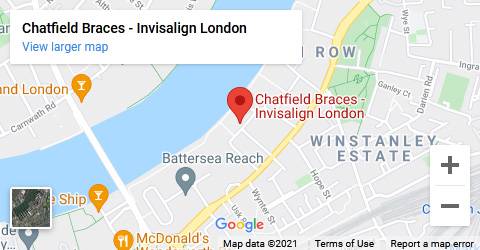 Click To View Full Map
Click To View Full Map 020 71834041
020 71834041
 info@chatfieldbraces.co.uk
info@chatfieldbraces.co.uk

